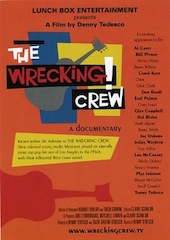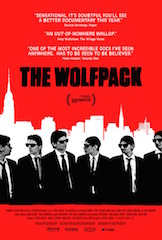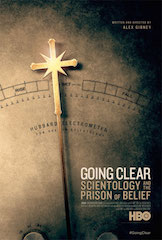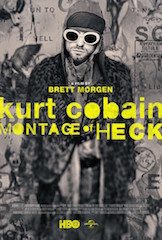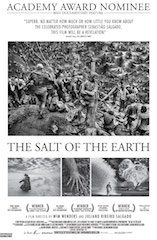Last night was the TV debut of the documentary I Am Chris Farley. I’m about a half hour in after DVR-ing it and I am already loving it. Farley is one of my favorite comedians from my younger years. My humor has always been this strange blend of Farley’s over-the-top, intense comedic child’s play and Jim Carrey’s goofball, manic antics. To see those who knew him best relay who he was, what he was all about, and what led to his early death is both nostalgic, inspiring, and advisory.
At my core, I am a documentary person. I love history and I love story. Even the most straight forward, information download documentaries are something I eat up. And when a director explores the artistic landscape of documentary filmmaking, it is truly some of the most revelatory and life changing cinematic experiences I can have.
Since the dawn of digital age, documentary movie making has become much more democratic and widespread because of the ease of making movies on anything from an iPhone to the most expensive equipment. Documentaries can seem like a dime a dozen, but I would argue it has only led to a greater depth of great moviemaking and wider spectrum of cinematic voices.
That being said, I wanted to share with you some of my favorite documentaries I have seen in 2015…so far. All apologies to I Am Chris Farley, but I still have an hour left to go in the movie.
[divider top=”no”]
5) The Wrecking Crew
One of the first documentaries I was able to watch in 2015; it was an early favorite movie from the usual down months of January and February. The documentary is about the little known studio musical group, The Wrecking Crew. Not only the bricks in Phil Spector’s famed musical production formula known as “the wall of sound”, they were the musical backing to some of the greatest albums of the 60’s and 70’s including Elvis, Sonny & Cher, The Beach Boys, The Righteous Brothers, Simon & Garfunkel, and the list goes on. They were some of the best musicians money could buy and their expertise and precision made studio albums better while their creativity was utilized by producers and writers to craft music we still listen to today.
The most fun I had in this movie was the small section devoted to Brian Wilson writing and producing the monumental album Pet Sounds with the Wrecking Crew. The members of the group praise his genius, laugh at his quirks, and share the joy of working with someone who appreciated their talent. Not only is it fun, but it makes a great companion movie to Love & Mercy; which devotes a good chunk of the movie to Wilson producing Pet Sounds and casts the members of the Wrecking Crew in the movie.
While it is not that artistically interesting, the main story is griping and interesting as it focuses on a couple different members of the Wrecking Crew. The principal focus is on Tommy Tedesco, famed studio guitar musician and father of the director of the movie, Denny Tedesco. You get insight into the life of a studio musician in the 60’s and 70’s in LA and the amazing contributions they made to the development of Rock n’ Roll. Very cool and very interesting. It is available on Netflix and I encourage all of you to watch it. Consider it another bonus Netflix Your Weekend pick.
[divider top=”no”]
4) The Wolfpack
When I first heard about this movie, I couldn’t wait to see it! Six brothers living on the Upper East Side of New York, holed up in an apartment by their reclusive father, and making sense of the world through movies and music. It is made to pander to us cinephiles who process a lot of life through the lens of popular culture and movies.
Director Crystal Moselle, at the time of filming a graduate student at New York’s School of Visual Arts, stumbled upon six similarly dressed brothers and began asking questions. She became friends with the curious Angulo family and eventually won their trust to film their story. What she found was a fascinating narrative of a family holed up by an over-bearing and prideful father. Growing up, the family hardly left the house, were homeschooled by their mother—equally a prisoner in their New York apartment—and left inside to avoid the “corrupt” culture of city life.
The movie doesn’t linger on the cinephile elements that are the draw for this movie. It focuses more on the family and the brothers’ journey from holed up teenagers to young adults making their own way in the world. They resent their father and sympathize with their mother, who longs for her kids to escape the culture but also love her sons’ zest for the artistic mediums of music and movies. She laments her children could not grow up as she did, in the country and the open green fields. You can see the pain she holds back for what her sons have gone through, yet she harbors faint glimmers of resentment towards her husband. In contrast, as the movie goes on she develops a central role in encouraging her boys’ blossoming young lives and is encouraged to break out of her protective shell and semi-self inflicted prison. The best and most moving scene in the movie is when she calls her mother, who she hasn’t spoken to in 30 years, and arranges to see her in New York. Her sons are ecstatic and pumps her fist as she rekindles relationship with family and begins to break out of her fearful confinement. It’s beautiful, sad, and cautionary.
[divider top=”no”]
3) Going Clear: Scientology and the Prison of Belief
Speaking of prisons of fear, control, and psychological manipulation; let’s talk about Scientology! Alex Gibney, director of the Oscar wining Taxi to the Dark Side, takes on the Church of Scientology and the results are extremely damning. While the book by Lawrence Wright is far more broad in its scope and much more incriminating, Gibney presents a picture of their origins, rise in popularity, and wavering influence.
Gibney first focuses on the history of Scientology and its founder, L. Ron Hubbard, its rapid growth under his successor, David Miscavige, as well as its popularity among Hollywood celebrities like Tom Cruise and John Travolta. All of this is done through interviews with former members of the church and what they reveal is terrifying and strange. The practices and overt posture of the group shed a lot of light on hat makes it an attractive group, as well as what has made its culture toxic and psychologically damaging. It’s a well-done and fascinating look at the cultic mind as well as an informative expose on how the church grew and what threatens it’s growth and popularity today.
[divider top=”no”]
2) Cobain: Montage of Heck
The temptation with Cobain is to hold him up how I/we remember him growing up. People wore T-Shirts with “Kurt Cobain: 1967-1994,” on the front and the quote, “It’s better to burn out than fade away,” on the back. He even predicted that the media wanted him to die so his life and death could be the old “Rock N’ Roll story”.
Brett Morgen’s documentary brings a measure of balance to the media stories about Cobain’s legacy, Courtney Love’s “bitchy” ways, and grounds the narrative as being about a person, not the band he was a part of or the icon he was propped up to be. It’s the movie’s humanity that authors a story of a man with a messed up childhood, a gift/curse of hyper-intelligence and artistic expression, and who’s fame ultimately swallowed him whole. It gives pause to our culture’s mindless pursuit of fame and recognition and jars us to count the cost. A sober reminder of the injustices of criticism, art, and our world. Cobain is a microcosm of what makes our modern society great and terrifying.
But more than any statement the movie might try to be making, we are left in the final shot of Cobain as a toddler waving goodbye to us. We’re being reminded that this man was not an icon, he was a person, and his life was beautiful yet tragic, and his death was not the end of a Hollywood story, but the death of someone’s child, someone’s husband, someone’s father, and many people’s friend.
[divider top=”no”]
1) The Salt of the Earth
An Oscar-nominee and Cannes Film Festival winner, it follows the life and photographs of world-renowned photographer, Sebastião Salgado. Directed by Wim Wenders, a documentary director who is also world-renowned, and Salgado’s son, Juliano Ribiero Salgado, The Salt of the Earth is about Sebastião’s photographs, but also his life and how his journeys had effected his life.
From his early years growing up in Brazil, to life with his wife, Lélia, and eventually to his work as a photographer, we journey with Sebastião around the world photographing people and people groups, the salt of the earth. Initially, his work reflects a hopeful future and a look at the world’s beauty and a celebration of the industry and love of people.
His middling years was a journey into what Wenders called, “the heart of darkness.” In the 1990’s, Salgado spent many years photographing the terrible genocides in Rwanda, the Congo, and the Balkans. One of the more powerful moments of this film is when he reflects on his journeys during this time and where his soul was at this time. He grimly muses:
“Everyone should see these photos. Everyone should see how terrible our species is…I don’t have any infectious diseases, but my soul is sick.”
“When I left [Rwanda], I no longer believed in anything; in any salvation for the human species. You couldn’t survive such a thing. We didn’t deserve to live. No one deserved to live.”
“How many times did I lay down my camera to cry over what I had seen?”
The final third is a hopeful reflection on some time away from photography and an optimistic return. Salgado’s photography is an existential journey uncovering the salt of the earth, but also a spiritual journey of a man uncovering what it means to be human. And of course, the cinematography of Wenders and the photographs of Salgado are breathtaking. One of the better films I have seen this year and definitely my favorite documentary.

